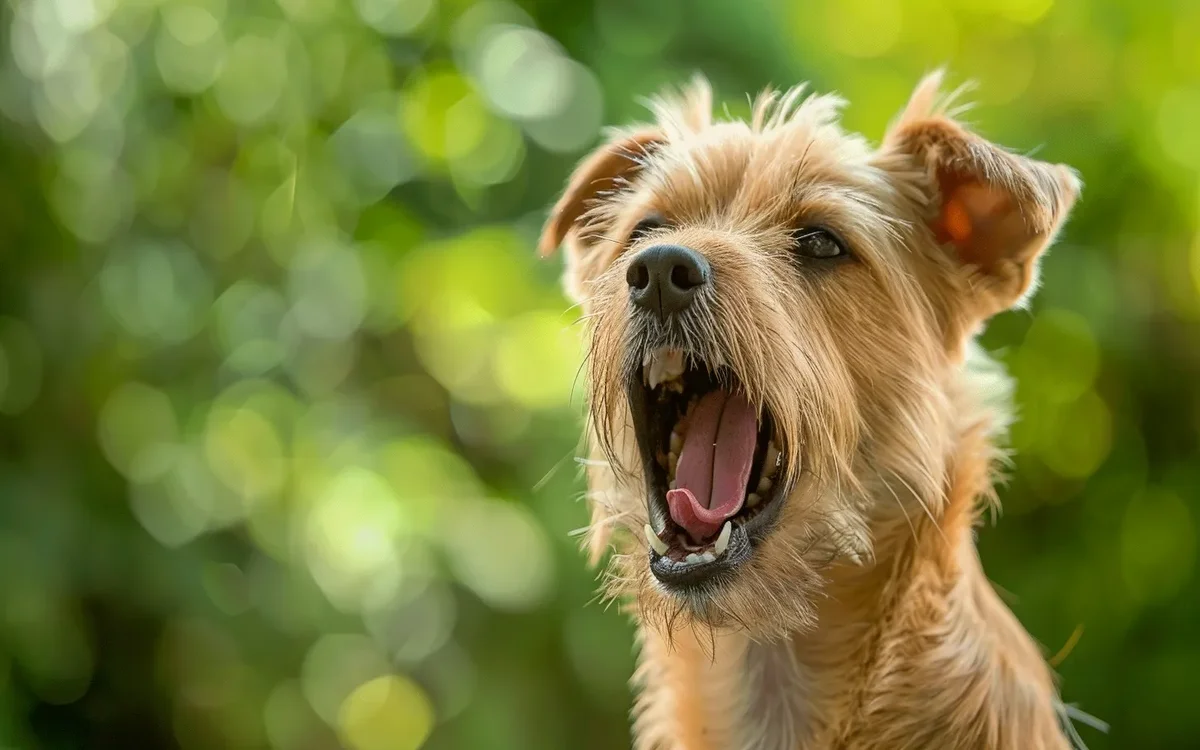While panting is a natural way for dogs to regulate temperature, recover from exercise, or express excitement, seeing your dog pant excessively without a clear reason can be concerning. This open-mouthed breathing could be a sign of respiratory distress, a potential medical emergency requiring immediate veterinary attention.
Introduction
Have you ever glanced over at your furry companion, only to find them gazing back with their mouth slightly agape, yet strangely silent? No panting, no heavy breathing – just a relaxed, open-mouthed expression. If this sounds familiar, you’re not alone. Many dog owners have observed this behavior and wondered, “Is this normal?”
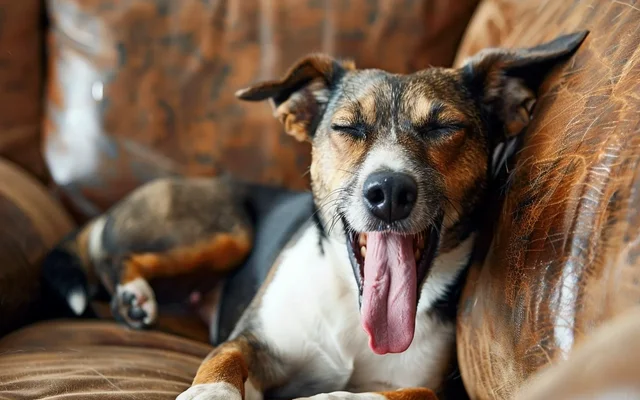
While an open mouth often signals panting, which is a dog’s way of cooling down, the absence of panting can raise questions. Is your dog simply relaxed, or could there be something else going on?
The truth is, there’s a wide range of possible explanations, some as simple as a contented sigh, others hinting at underlying health concerns. In this comprehensive guide, we’ll delve into the common and not-so-common reasons behind your dog’s open-mouth, no-panting look. We’ll help you determine whether it’s just a quirky habit or a sign that warrants a trip to the vet. Rest assured, by the end of this article, you’ll be well-equipped to decode your dog’s silent open-mouth messages.
Understanding Normal Canine Breathing
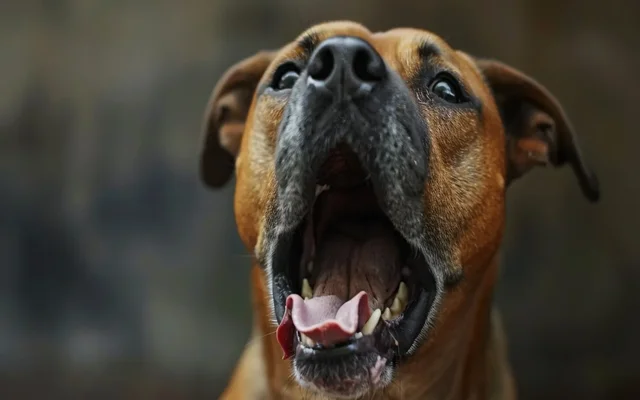
Before we dive into the reasons behind your dog’s open-mouthed, non-panting state, let’s take a moment to understand their normal breathing patterns. After all, knowing what’s normal helps us recognize when something might be amiss.
The Purpose of Panting
Unlike humans, who sweat to regulate body temperature, dogs rely heavily on panting. When your furry friend gets hot – whether from exercise, excitement, or warm weather – they’ll open their mouth and breathe rapidly. This allows air to circulate over their tongue and moist surfaces in their respiratory tract, facilitating evaporation and cooling them down. Think of it as their built-in air conditioner!
What Normal Panting Looks Like
Normal panting varies from dog to dog and depends on their breed, size, and activity level. In general, it’s characterized by:
- Open Mouth: The dog’s mouth will be open, with their tongue often hanging out.
- Rapid Breathing: The breaths will be quick and shallow.
- Rhythmic Pattern: Panting should have a consistent rhythm.
- Pink Gums: A healthy dog’s gums will remain pink while panting.
It’s also normal for dogs to drool a bit while panting, especially if they have loose jowls or a long tongue.
Beyond Panting: Other Normal Breathing Patterns
While panting is the most recognizable form of canine respiration, there are other normal breathing patterns to be aware of:
- Sleeping: When your dog is asleep, their breathing will slow down and become deeper.
- Relaxed: A relaxed dog’s breathing will be slower and more regular than panting, often with their mouth closed.
- Nose Breathing: Healthy dogs typically breathe through their nose when not panting or exerting themselves.
By understanding these normal breathing patterns, you’ll be better equipped to assess your dog’s open-mouthed behavior and determine whether it’s a cause for concern or simply a relaxed expression.
Common, Benign Reasons for Open Mouth Without Panting
In many cases, a dog’s open mouth in the absence of panting is perfectly normal and nothing to worry about. Let’s explore some of the most common, benign reasons for this behavior:
Relaxation and Contentment
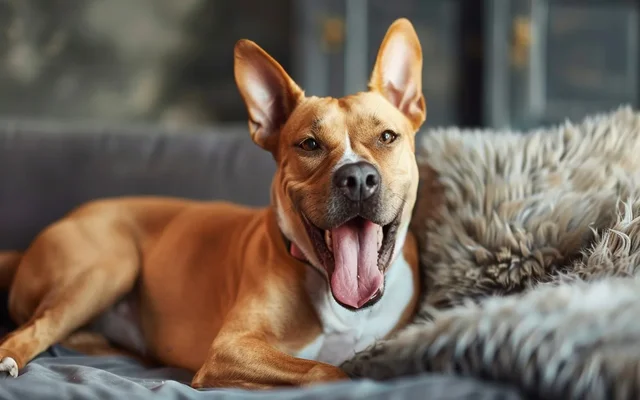
Just like humans might let out a sigh of relief or contentment, dogs often express their relaxation with a slightly open mouth and a relaxed facial expression. This is particularly common when they’re lounging around the house, enjoying a belly rub, or simply basking in your company. Think of it as their way of saying, “Life is good!”
Mouth Breathing Due to Anatomy
Certain breeds, known as brachycephalic breeds, are prone to mouth breathing due to their unique anatomy. These dogs, including Pugs, Bulldogs, French Bulldogs, and Boston Terriers, have shortened snouts and flattened faces. This facial structure can obstruct their nasal passages, making it difficult to breathe through their nose effectively. As a result, they often resort to mouth breathing to get enough air, even when not panting.
Mild Stress or Anxiety
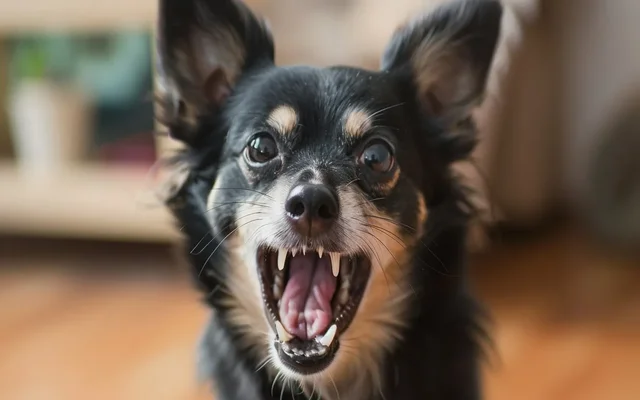
While excessive panting is a classic sign of anxiety in dogs, mild stress can sometimes manifest as a slightly open mouth without panting. This could be triggered by new environments, unfamiliar people, loud noises, or even separation from their owner. If you notice your dog exhibiting this behavior, observe their body language for other signs of stress, such as tucked tail, flattened ears, or lip licking.
Recent Exercise
After a vigorous play session or walk, it’s not uncommon for a dog to continue breathing with an open mouth for a short period, even if they’re no longer panting heavily. This is simply their body’s way of continuing to cool down and regulate their temperature. As long as the breathing gradually returns to normal and your dog isn’t showing any signs of distress, there’s no need to be concerned.
Warm Weather
Similar to the post-exercise scenario, dogs might keep their mouths open in warm weather to aid in thermoregulation. Even if they’re not actively panting, the open mouth allows for increased airflow and helps them stay cool. However, be mindful of the signs of heatstroke, such as excessive panting, drooling, lethargy, and disorientation.
If your dog’s open-mouthed behavior falls into any of these categories and they’re otherwise healthy and happy, there’s likely no cause for alarm. However, it’s always a good idea to consult your veterinarian if you have any concerns or notice any additional unusual symptoms.
When Open Mouth Breathing Indicates a Problem
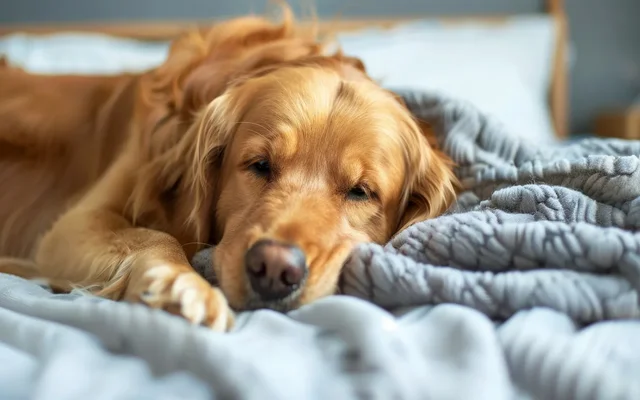
While a relaxed open mouth is often nothing to worry about, it’s crucial to be aware of situations where it could signal a more serious issue. Open-mouth breathing accompanied by any of the following signs warrants immediate veterinary attention:
Respiratory Distress
If your dog is struggling to breathe, it’s a clear sign that something is wrong. Look for these signs:
- Difficulty Breathing: Labored breathing, gasping for air, or wheezing.
- Noisy Breathing: High-pitched sounds, snoring, or whistling when inhaling or exhaling.
- Blue or Pale Gums: A sign of inadequate oxygen levels, requiring immediate veterinary care.
- Extended Neck: Your dog may stretch their neck out to try and get more air.
- Restlessness or Anxiety: They might appear anxious or unable to get comfortable.
Potential Causes of Respiratory Distress:
- Allergies: Inhaled allergens can trigger an allergic reaction, causing inflammation and swelling in the airways.
- Infections: Respiratory infections, like kennel cough or pneumonia, can lead to breathing difficulties.
- Foreign Objects: Inhaled objects, such as grass seeds or small toys, can obstruct airways.
- Trauma: Injuries to the chest or neck can cause breathing problems.
Heatstroke
Heatstroke is a life-threatening condition that can develop rapidly in dogs, especially in hot and humid weather. If your dog exhibits any of the following symptoms, seek veterinary help immediately:
- Excessive Panting: Heavy, rapid panting that doesn’t subside.
- Drooling: Profuse salivation.
- Lethargy: Weakness, reluctance to move, or collapse.
- Disorientation: Confusion, staggering, or seizures.
- Bright Red or Purple Gums: A sign of dangerously high body temperature.
- Vomiting or Diarrhea: Can be a sign of heatstroke-related organ damage.
Dental Issues
Dental pain, such as that caused by periodontal disease, tooth abscesses, or broken teeth, can cause a dog to keep their mouth open. They might also drool excessively, paw at their mouth, or be reluctant to eat. Regular dental checkups are crucial for preventing dental problems and ensuring your dog’s overall well-being.
Neurological Problems
Neurological conditions, such as brain tumors, head trauma, or certain infections, can affect a dog’s breathing patterns. If your dog’s open-mouthed breathing is accompanied by other neurological signs, like seizures, weakness, or head tilt, it’s essential to seek veterinary evaluation.
Poisoning or Toxin Exposure
Certain toxins, like insecticides, rodenticides, or poisonous plants, can disrupt a dog’s breathing. If you suspect your dog has been exposed to a toxin, contact your veterinarian or a pet poison control hotline immediately.
Other Medical Conditions
In some cases, open-mouth breathing can be a symptom of underlying medical conditions like heart disease, laryngeal paralysis (a condition affecting the larynx), or other respiratory disorders. A thorough veterinary examination is necessary to diagnose and treat these conditions.
When to Consult a Veterinarian
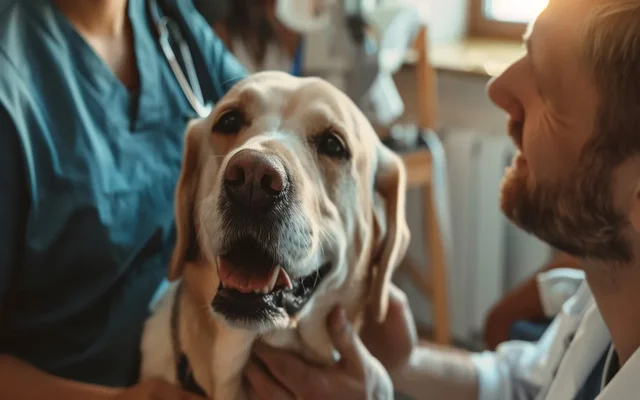
While many instances of open-mouth breathing in dogs are harmless, there are specific situations where a trip to the vet is warranted. As a responsible pet parent, it’s crucial to recognize the warning signs and seek professional help promptly. Here’s when you should consult your veterinarian:
Red Flags to Watch For
- Difficulty Breathing: If your dog is struggling to breathe, gasping for air, or exhibiting noisy breathing, it’s a major red flag. Don’t delay seeking veterinary attention.
- Abnormal Gum Color: Blue, pale, or brick-red gums indicate compromised oxygen levels or heatstroke, both requiring immediate medical intervention.
- Lethargy or Collapse: Sudden weakness, reluctance to move, or collapse are serious signs that shouldn’t be ignored.
- Disorientation or Seizures: Confusion, staggering, or seizures could indicate neurological issues or heatstroke, both requiring urgent care.
- Excessive Drooling or Vomiting: These can be symptoms of various conditions, including poisoning, heatstroke, or dental problems.
- Persistent Open-Mouth Breathing: If your dog’s mouth remains open for an extended period without panting, even after ruling out benign causes, consult your vet for a thorough assessment.
Early Intervention is Key
Remember, early intervention is often crucial for successful treatment and recovery. If you’re unsure whether your dog’s open-mouth breathing is normal or a sign of a problem, it’s always better to err on the side of caution and consult your veterinarian. They can perform a thorough examination, conduct necessary tests, and diagnose the underlying cause, ensuring your furry friend receives prompt and appropriate care.
How a Vet Will Diagnose and Treat the Problem
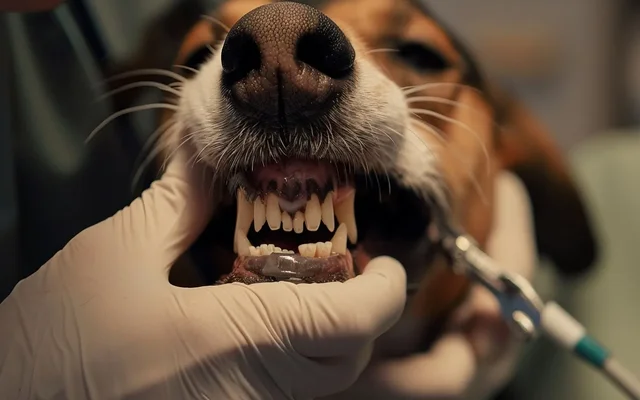
If your furry friend’s open-mouthed breathing raises concerns, a trip to the vet is in order. But what can you expect during this visit? Let’s break down the typical diagnostic process and potential treatment options:
Diagnostic Process
Your veterinarian will start by asking you questions about your dog’s medical history, recent activities, and any symptoms you’ve observed. This information helps them narrow down potential causes and tailor their approach.
Next, they’ll conduct a thorough physical examination, paying close attention to your dog’s breathing patterns, heart rate, gum color, and overall demeanor. Depending on their initial findings, they might recommend additional tests, such as:
- Bloodwork: To assess organ function, check for signs of infection, or identify any underlying metabolic disorders.
- X-rays or Ultrasound: To visualize the lungs, heart, and other internal organs for any abnormalities.
- Electrocardiogram (ECG): To evaluate the heart’s electrical activity and detect any potential cardiac issues.
- Other Specialized Tests: In some cases, more specific tests like laryngeal exams, rhinoscopy (examining the nasal passages), or neurological assessments might be necessary.
Treatment Options
The treatment plan for your dog’s open-mouth breathing will depend entirely on the underlying cause. Here are some potential scenarios:
- Respiratory Issues: If allergies or infection are the culprits, your vet might prescribe antihistamines, antibiotics, or anti-inflammatory medications. In cases of foreign object obstruction, surgery might be required.
- Heatstroke: Immediate cooling measures are crucial for heatstroke. Your vet will administer intravenous fluids, oxygen therapy, and medications to stabilize your dog’s condition.
- Dental Problems: Dental cleanings, extractions, or other dental procedures can alleviate pain and address the underlying issue.
- Neurological Conditions: Treatment for neurological problems varies widely depending on the diagnosis. It might involve medication, surgery, or supportive care.
- Poisoning: Treatment for poisoning depends on the specific toxin involved. It might include decontamination, administration of antidotes, or supportive care to manage symptoms.
Prognosis and Follow-up
The prognosis for your dog’s recovery depends on the underlying cause of their open-mouth breathing and how promptly it’s diagnosed and treated. In many cases, with appropriate care, dogs can make a full recovery and resume their normal activities.
Your veterinarian will likely recommend follow-up appointments to monitor your dog’s progress and ensure the treatment is effective. They might also provide you with instructions for home care, such as administering medications or making changes to your dog’s environment to prevent future episodes.
Tips for Preventing Open Mouth Breathing Problems
While not all causes of open-mouth breathing can be prevented, there are proactive steps you can take to minimize the risk and promote your dog’s respiratory health:
Regular Veterinary Checkups and Dental Care
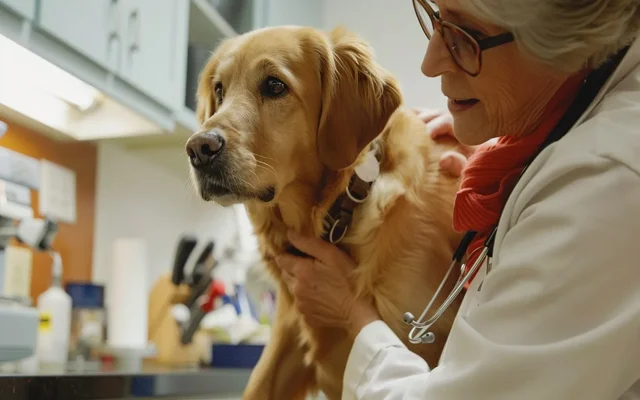
- Schedule routine checkups: Biannual wellness exams allow your vet to detect any early signs of respiratory issues, dental problems, or other conditions that could contribute to open-mouth breathing.
- Prioritize dental hygiene: Brush your dog’s teeth regularly and schedule professional cleanings as recommended by your vet. Dental disease can not only cause pain and open-mouthed breathing but also lead to systemic health problems.
Maintain a Healthy Weight and Exercise Routine
- Watch the waistline: Obesity puts extra strain on your dog’s respiratory system, making them more prone to breathing difficulties. Keep your dog at a healthy weight through a balanced diet and portion control.
- Engage in regular exercise: Regular physical activity helps maintain your dog’s overall health and can strengthen their respiratory muscles. However, avoid overexertion, especially in hot weather, and be mindful of your dog’s individual exercise needs.
Provide Adequate Shade and Water in Warm Weather

- Limit sun exposure: Dogs can overheat quickly, especially brachycephalic breeds. Provide ample shade and access to cool areas during hot days.
- Offer plenty of water: Always ensure your dog has access to fresh, clean water, especially during and after exercise.
- Consider cooling aids: Cooling vests, mats, or bandanas can help regulate your dog’s body temperature in warm weather.
Avoid Exposure to Toxins
Secure hazardous substances: Keep household cleaners, pesticides, and other potentially toxic substances out of your dog’s reach.
- Be mindful of plants: Some common plants are toxic to dogs. Familiarize yourself with the plants in your yard and avoid those that could pose a risk.
- Supervise outdoor adventures: When hiking or walking in unfamiliar areas, be aware of potential hazards like poisonous snakes, insects, or contaminated water sources.
Monitor for Signs of Stress and Anxiety
- Observe your dog’s behavior: Learn to recognize signs of stress or anxiety in your dog, such as panting, pacing, trembling, hiding, or destructive behavior.
- Address triggers: If you identify specific triggers for your dog’s anxiety, take steps to minimize their exposure or provide them with coping mechanisms.
- Consider behavioral training: If anxiety is a recurring issue, consult a certified dog trainer or behaviorist for guidance and support.
By incorporating these preventive measures into your dog’s care routine, you can promote their respiratory health and reduce the likelihood of open-mouth breathing problems. Remember, a happy and healthy dog is a dog who breathes easy!
Conclusion
In the grand tapestry of canine communication, an open mouth without panting may seem like a curious anomaly. Yet, as we’ve explored, it often speaks volumes about your dog’s state of mind or health. From a simple sigh of contentment to potential underlying issues, understanding this behavior is key to ensuring your furry friend’s well-being.
While a relaxed, open-mouthed expression is usually harmless, it’s crucial to remain vigilant for any accompanying signs of distress. Remember, your dog relies on you to be their advocate and interpreter. If you’re ever in doubt, don’t hesitate to reach out to your veterinarian. Their expertise can provide invaluable peace of mind and guide you toward the best course of action.
By staying informed and proactive, you can ensure your dog’s open-mouthed moments remain a quirky charm rather than a cause for concern. After all, a happy, healthy dog is a dog who breathes easy, both literally and figuratively.
So, the next time you catch your dog sporting that open-mouthed grin, take a moment to consider the possibilities. Is it a sign of pure bliss or a subtle plea for help? Armed with the knowledge from this guide, you’re now better equipped to decipher their silent messages and provide them with the care they deserve.
FAQs
Is it normal for my dog’s mouth to be open slightly when they’re relaxed?
Yes, often it’s simply a sign of contentment and relaxation. If your dog seems comfortable and is breathing normally otherwise, there’s likely no cause for concern.
My dog’s mouth is open, but they’re not panting or showing signs of distress. Should I be worried?
While open-mouth breathing without panting can be normal, it’s wise to observe your dog for any other unusual signs. If they seem comfortable and their breathing is regular, it’s likely nothing serious. However, if you’re unsure, consult your vet for peace of mind.
Could my dog’s breed be a factor in their open-mouth breathing?
Absolutely! Brachycephalic breeds (like Pugs, Bulldogs) have flat faces and short snouts, which can make breathing through their nose difficult. They often resort to mouth breathing even when relaxed.
What are some subtle signs of stress or anxiety in dogs that might accompany open-mouth breathing?
Look for tucked tails, flattened ears, lip licking, yawning, pacing, or avoiding eye contact. If you suspect stress, try to identify and remove the trigger, or consult a vet or behaviorist for help.
How can I differentiate between normal open-mouth breathing and a sign of a respiratory problem?
Normal breathing is usually quiet and effortless, even if the mouth is open. If your dog’s breathing is labored, noisy, or if they’re gasping for air, it’s a sign of a respiratory problem requiring immediate veterinary attention.
My dog’s mouth is open after exercise, but they’re not panting heavily. Is this okay?
Yes, it’s normal for dogs to continue breathing with their mouth open for a short time after exercise to cool down. However, if it persists or they seem distressed, consult your vet.
Can dental pain cause my dog to keep their mouth open even when they’re not panting?
Yes, dental pain can definitely cause open-mouth breathing. If your dog is drooling, pawing at their mouth, or hesitant to eat, have them checked by a vet for dental issues.
Are there any medications or environmental factors that could lead to open-mouth breathing in dogs?
Yes, certain medications (like steroids) and exposure to toxins (like pesticides) can affect a dog’s breathing. If you suspect your dog has ingested something harmful, contact your vet immediately.
Are there any medications or environmental factors that could lead to open-mouth breathing in dogs?
Yes, certain medications (like steroids or some pain relievers) can cause an increase in respiratory rate, leading to open-mouth breathing. Exposure to toxins or allergens in the environment, such as pollen, mold, or household cleaners, can also trigger respiratory distress and open-mouth breathing. If you suspect your dog has ingested something harmful or is reacting to an allergen, contact your veterinarian immediately.
My brachycephalic dog breathes through their mouth a lot. Is there anything I can do to help them?
Brachycephalic breeds are prone to breathing difficulties due to their anatomy. You can help your brachycephalic dog breathe easier by:
- Keeping them cool: Avoid strenuous activity in hot or humid weather and provide ample shade and water.
- Using a harness instead of a collar: Collars can put pressure on their already compromised airway.
- Managing their weight: Obesity exacerbates breathing problems.
- Considering surgery: In severe cases, surgical procedures can widen nostrils or remove excess tissue in the throat to improve airflow.
- Consulting your vet: Regular checkups are essential for monitoring your brachycephalic dog’s respiratory health and making any necessary adjustments to their care.
Remember, open-mouth breathing can be a sign of various conditions in brachycephalic breeds, so it’s crucial to consult your veterinarian for personalized advice and treatment options.

Healthy dogs mean happy dogs, and that makes me happy! I’m here to share all the tips for keeping your best furry friend in top shape, from puppyhood to their golden years.

